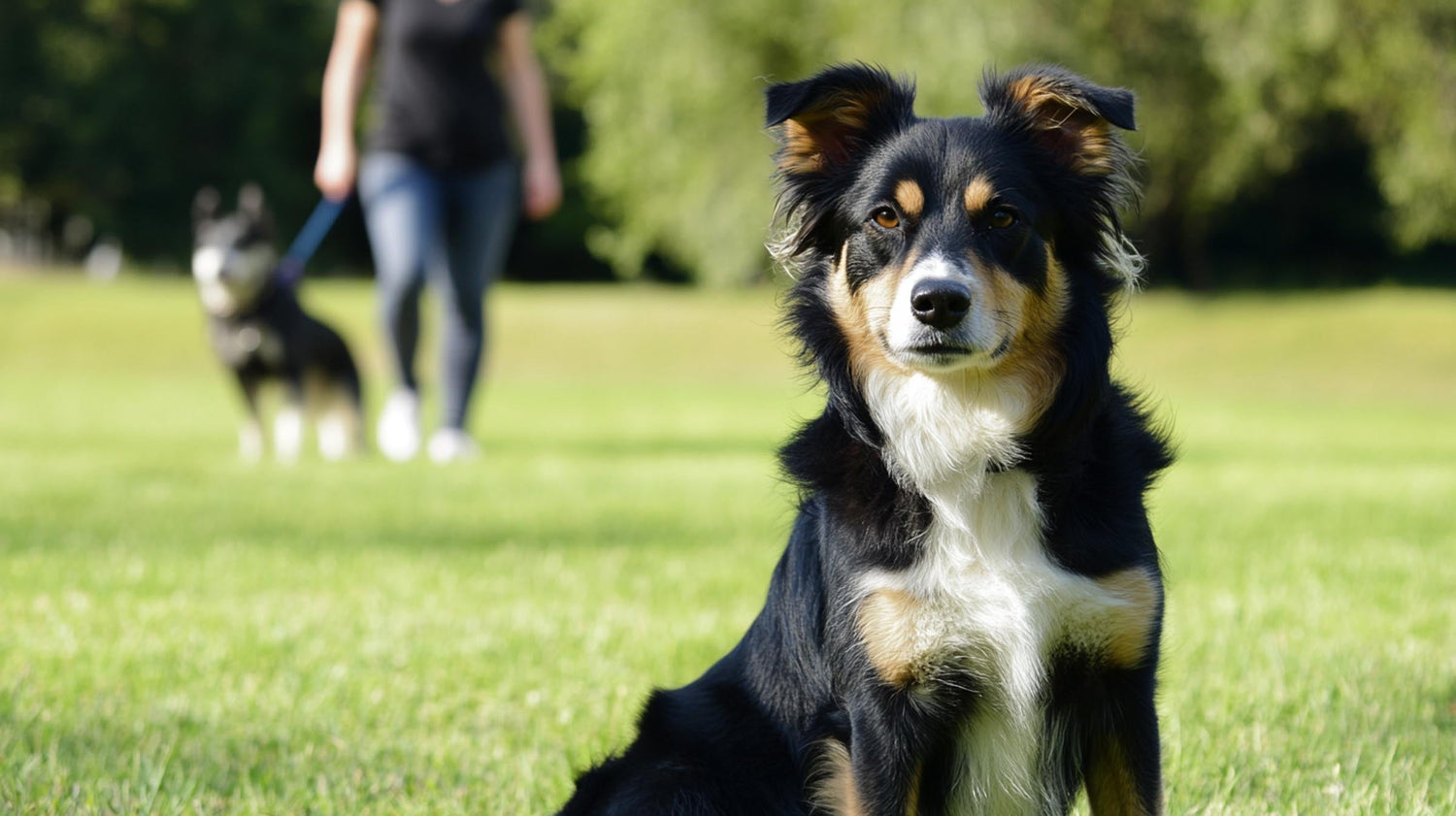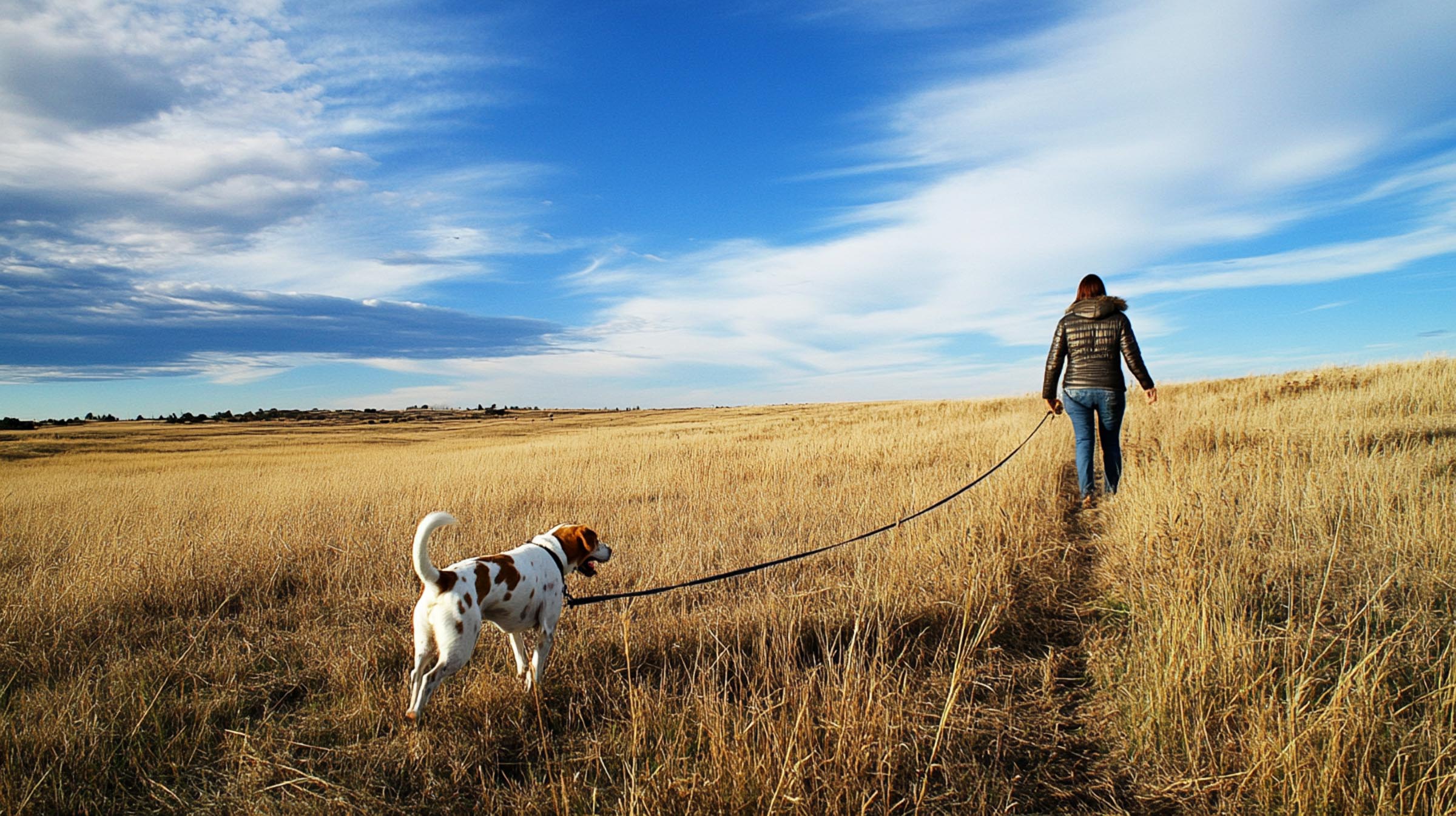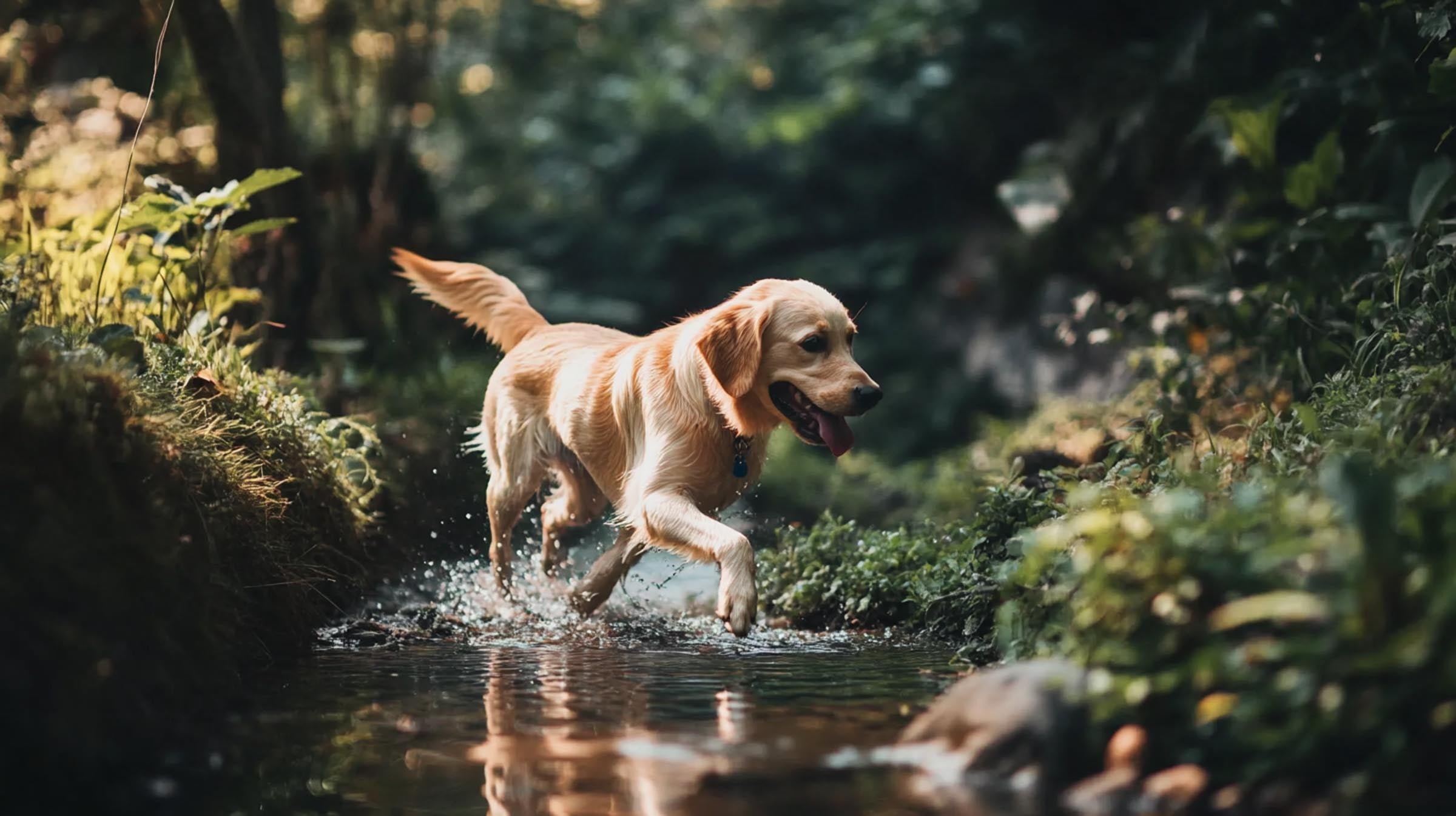Introducing distractions during dog training is essential for off-leash reliability and obedience in any environment. By gradually incorporating distractions, you can help your dog maintain focus, no matter what is happening around them. This method builds confidence and responsiveness, ensuring your dog can follow commands in a variety of situations.
Summary
- Introduce distractions gradually during dog training to build focus and obedience in real-world scenarios.
- Start with mild distractions, like toys or a family member walking by, before progressing to busier environments such as parks.
- Control distractions by keeping them manageable and predictable, adjusting based on your dog’s progress.
- When your dog struggles, reduce the distraction level or move to quieter areas to rebuild confidence.
- Practice in varied environments—urban, open spaces, and wooded trails—to generalise training.
- Reward your dog frequently to keep them engaged and focused throughout the process.
Start With Minimal Distractions
The first step in introducing distractions is to ensure your dog has mastered basic obedience in distraction-free environments. Beginning in a quiet space helps your dog focus fully on the commands, creating a solid foundation before you introduce any distractions.
- Practice commands like "sit," "stay," and "come" in quiet rooms or familiar, low-stimulation spaces.
- Keep the sessions short and fun to maintain your dog’s attention.
- Use high-value rewards such as small treats or favourite toys to encourage focus.
- Once your dog performs consistently, introduce subtle distractions, such as a soft noise or moving toy, but keep the environment calm.
Tip: Make sure you maintain eye contact with your dog while giving commands, as this helps reinforce their focus on you and minimises the likelihood of them getting distracted.
Introduce Controlled Distractions Gradually
Once your dog responds reliably in a quiet setting, introduce controlled distractions that you can manage easily. The key here is to keep distractions light and predictable to avoid overwhelming your dog.
- Have a family member or friend walk by from a distance while your dog is practising commands.
- Toss a toy lightly or drop an object nearby to gauge your dog’s ability to stay focused.
- If your dog breaks concentration, gently guide them back to the task, rewarding them when they refocus.
- Practice increasing the distance between your dog and the distraction to further test their attention.
Tip: If your dog gets too distracted, reduce the intensity of the distraction (e.g., have your friend stand still instead of walking). Gradual exposure builds focus over time without causing frustration.
Move to Moderate Distractions
Once your dog is comfortable around light distractions, it's time to level up the challenge by moving to moderate distractions in new environments. This might include familiar outdoor areas with a bit more activity but without overwhelming stimuli.
- Take your dog to a local park with fewer people or dogs.
- Practise commands while keeping your dog on a long leash to ensure safety.
- Increase the intensity of distractions slowly—start with distant passersby or other animals.
- Reward your dog generously for maintaining focus despite these new distractions.
Tip: Use distance as a tool. The closer a distraction is, the more tempting it becomes. Start far away and gradually decrease the distance between your dog and the distraction as they build confidence.
Increase Distraction Levels in High-Stimulation Areas
When your dog consistently performs well in moderately distracting environments, it’s time to tackle high-stimulation areas like busy parks, city streets, or places with off-leash dogs. At this stage, your dog should be fairly reliable, but distractions will be less predictable.
- Start with familiar commands in a controlled setting before increasing the complexity.
- Gradually expose your dog to more unpredictable distractions, such as cyclists, loud noises, or groups of dogs.
- Use off-leash training only if your dog has mastered recall in safer settings.
- Keep training sessions short, as high-stimulation environments can be mentally exhausting for your dog.
Tip: If your dog starts to struggle, lower the intensity of the distractions or go back to a less stimulating environment to rebuild their confidence. Training should be progressive, not overwhelming.
Adjust Training When Necessary
There will be moments when your dog seems overwhelmed or unresponsive to commands. Recognising when to adjust the training environment is crucial to ensure progress continues in a positive direction. It’s okay to take a step back to a more controlled or familiar setting if your dog needs a confidence boost.
- If your dog becomes distracted or stops responding, reduce the number of distractions.
- Move to a quieter area or remove the distractions entirely to allow your dog to refocus.
- Shorten the distance between you and your dog if they seem to struggle with recalling commands from afar.
- Increase the value of rewards for moments when your dog successfully refocuses on you.
Tip: Use a “reset” word like "focus" or "look at me" to bring your dog’s attention back to you when distractions become too intense. This cue helps your dog reset their focus without frustration.
Training in Varied Environments for Real-World Success
To prepare your dog for success in the real world, it's crucial to train in varied environments. A dog that can respond well in multiple settings—urban streets, beaches, open fields, or wooded trails—will be better prepared to handle distractions anywhere.
- Start in quieter areas such as suburban streets or empty parking lots to work on commands around mild distractions.
- Gradually introduce more challenging environments like busy city streets or parks full of people, cars, and dogs.
- Ensure your dog practices both on and off-leash (where safe), adjusting based on the environment’s level of distraction.
- Train on different terrains, as dogs can behave differently in sand, grass, or forested areas with wildlife.
Tip: Introduce environments with varied smells, sights, and sounds. Dogs rely heavily on their senses, so new environments challenge their ability to stay focused on you instead of their surroundings.
Reward-Based Training for Consistent Results
No matter the environment or distraction level, reward-based training is a key factor in maintaining your dog’s focus and motivation. Consistently rewarding your dog for staying attentive helps solidify good behaviour, even when distractions are present.
- Use high-value treats or their favourite toys as rewards for focused behaviour.
- Offer praise and affection when your dog successfully follows a command.
- Rewards should be immediate to reinforce the connection between behaviour and reward.
- As your dog progresses, reduce the frequency of treats but maintain positive reinforcement with praise and attention.
Tip: Mix up the types of rewards (toys, food, verbal praise) to keep your dog engaged. The unpredictability of rewards can make your dog more likely to stay focused, knowing something good is always coming.
Conclusion
Introducing distractions gradually during dog training builds a reliable foundation of focus and obedience. Starting in quiet, controlled settings and slowly working up to high-stimulation environments ensures that your dog remains focused, confident, and responsive to your commands. The key is to adjust distractions based on your dog’s progress and to consistently reward them for staying engaged, helping them succeed in any situation.




Leave a comment
This site is protected by hCaptcha and the hCaptcha Privacy Policy and Terms of Service apply.